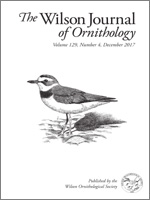It is often assumed that passerine birds conceal nests to reduce predation because nest predation is usually the primary cause of reproductive failure. We hypothesized that nesting success would be higher in nest cavities with more concealed entrances and therefore more likely chosen over less concealed cavities. We set 200 nest boxes in ∼100 territories of White-rumped Shamas (Copsychus malabaricus), territorial cavity nesters, in a seasonal evergreen forest in northeastern Thailand. Shamas were provided two boxes per territory, one with high and the other with low vegetation cover in front of the box entrance. Boxes were reset in new locations after a nest fledged or failed, providing 170 ‘choice' trials. We also compared vegetation characteristics of natural nest cavities with available natural nest cavities. Contrary to predictions, shamas placed nest material in the less concealed boxes significantly more often (89 boxes vs. 48), were significantly more likely to lay eggs in less concealed boxes (66 vs. 27), and eggs were significantly more likely to hatch in the low concealment treatment (38 vs. 8). Nest survival in the low concealment treatment was approximately twice that of the highly concealed boxes 36% (± 0.035) vs. 18% (± 0.042). Vegetation around natural nests (n = 26) was not significantly different from available randomly selected cavities (n = 52). Both used and available cavities had low levels of concealment. Cavity-nesting species may prefer less concealed sites because it is easier for an incubating/brooding female to detect approaching predators, allowing additional time for escaping and/or for mounting a defense.
How to translate text using browser tools
1 December 2017
Influence Of Vegetation Cover On Nest Cavity Selection and Nesting Success of White-Rumped Shamas (Copsychus malabaricus): An Experimental Test
Tananun Chotprasertkoon,
Andrew J. Pierce,
Tommaso Savini,
Philip D. Round,
Wangworn Sankamethawee,
George A. Gale
ACCESS THE FULL ARTICLE
cavity-nesting
concealment
nest boxes
nest survival
nest-site selection
White-rumped Shama





